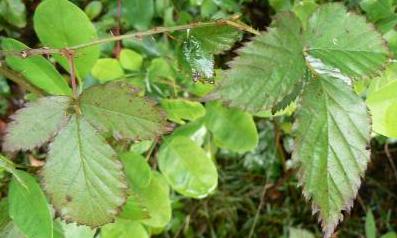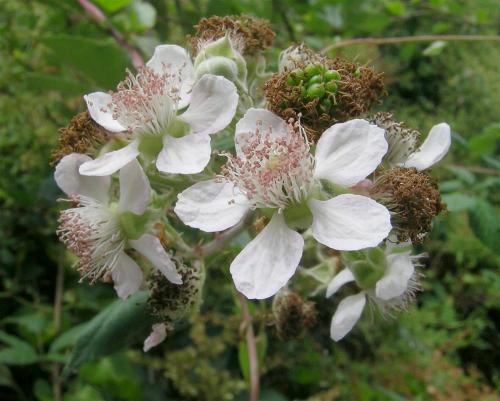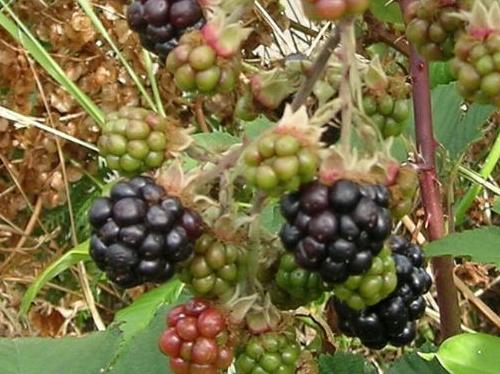
| Blackberry ROSACEAE | Don Herbison-Evans, (donherbisonevans@outlook.com) |

foliage

| Blackberry ROSACEAE | Don Herbison-Evans, (donherbisonevans@outlook.com) |

foliage
Rubus is a world-wide group of prickly, shrubby scramblers and climbers. They have compound leaves of 3 to 5 evenly or irregularly toothed leaflets with prickly petioles. Possibly the Rubus most well-known to Australians is the group of species collectively known as Rubus fruticosus or Blackberry, which was introduced from Europe. and is now a serious pest in many parts of Australia.

They have flowers with 5 broad petals and 5 persistent sepals with numerous stamens. The flowers are white but may shade towards pink.
The fruits are segments clustered together into an aggregate fruit, which ripens to either red or black depending on the plant.

There are approximately 250 species of Rubus, including many well-known edible fruits such as Raspberry and Loganberry, but only about seven species native to Australia. These, too, have edible fruits, though accounts of their taste vary widely; they have been described as both tasteless and sweet and juicy - perhaps it depends on how hungry you are.
Many very closely-related introduced plants are grouped under the name 'Rubus fruticosus complex', because of the difficulty in distinguishing between them. They include:
Caterpillar FAQs |
| Flowers in Australia |
(updated 9 October 2007)